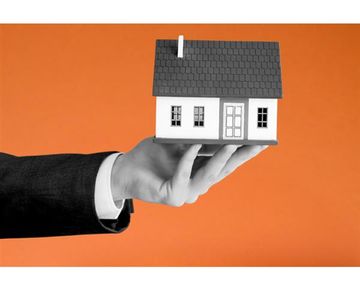Sustainable and innovative materials for building homes are pushing the boundaries
According to a recent Savills report which explores global trends in the world of real estate, after several years of global disruption and macroeconomic volatility, there is cause for optimism in real estate markets as healthier, greener living becomes increasingly important.
As highlighted in a survey by Pam Golding Properties, which is Savills’ exclusive residential real estate partner in Africa, introducing ‘green’ features to homes, such as solar and other forms of energy-efficiency, grey water systems, rainwater collection tanks, boreholes, and waterwise gardens, among others, has become more and more commonplace in new-builds and retro-fits. The surge in renewable energy has also been fuelled by the load shedding experienced in South Africa, coupled with the very significant increases in electricity tariffs in recent years.
Says Dr Andrew Golding, chief executive of the Pam Golding Property group: “Sustainable building has become an important consideration rather than just a ‘nice-to-have’, as South African consumers seek to achieve long-term financial savings as well as added value and saleability when the time comes to sell their homes. Among other things, there are also obvious benefits for the planet regarding the conservation of natural resources, and overall health benefits through reducing carbon emissions, energy efficiency, and the like.
“The use of innovative building materials in the construction industry has increased dramatically in recent years, incorporating age-old as well as modern methods, each with its own characteristics and unique appeal, and demonstrating noteworthy creativity in the pursuit of renewable, eco-friendly solutions.”
Sustainable natural resources
Demonstrating the sustainability of centuries-old building materials and methods, corbelled houses such as those still seen in the Karoo and built from about the 1820s are made using flat stones laid on top of one another and extending slightly further inwards until meeting at the apex.
Rammed earth is another ancient, environmentally friendly and aesthetically pleasing construction method which is still being utilised today, compacting earth – usually combining gravel, sand and clay to form the walls and create a healthy living environment.
Houses, including tree-houses and other structures such as temples - all woven with bamboo, are popular in some climates where this cost-effective building material is readily available - such as in Asian countries. An apartment building in Cape Town achieved fame due to its being built with carbon-negative hempcrete and hemp construction materials, which means it absorbs carbon dioxide, and is energy-saving, durable and lightweight.
Transparent wood is a very recent eco-friendly material, said to be much stronger and more lightweight than glass, as well as being flexible and containing efficient thermal properties. Used for windows, wood from the quick-growing Balsa tree is soaked in a special solution, with epoxy resin added.
Says Dr Golding: “The recycling of materials has launched some successful business ventures while solving an ongoing problem – for example, the recycling of plastic bottles to make bricks which provide good insulation for housing, while other examples of alternative materials for bricks include straw bales, bricks made from construction waste or even bagasse, a by-product of sugarcane processing.
“Meanwhile another trend, using shipping containers to build homes and other structures has in recent years caught on in a meaningful way. It is possible to have containers delivered to site in a couple of months - complete with selected finishes and ready to move in, which means there’s little construction debris or inconvenience.
“3D printing of houses is now a well-known phenomenon, and apart from using cement and mortar, or clay and sand, these can also now be constructed using recycled materials such as plastic and other urban waste, eco-friendly materials like bioplastics – for lower environmental impact, and even waste from rice production, as well as a mixture of soil and seeds to create ‘living’ buildings that sprout shoots and form green facades, with roots providing extra strength and stability to the structure.”
Windows made with panels of glass filled with water can regulate temperatures by absorbing heat, thereby reducing the need for and cost of air conditioning, while cladding panels made from forestry and agricultural waste actually store carbon.
Adds Dr Golding: “In respect of concrete itself – pre-cast concrete panels are not only making building homes quicker and with the ability to capture solar energy and rainwater, but a recent groundbreaking innovation can also create renewable energy storage in a ‘supercapacitor’ from water, cement and a substance known as carbon-black, which means there is the potential for storing solar energy.
“‘Self-healing concrete’ is another reality today, utilising different methods whereby the reaction of various additives enables the concrete to fill or heal cracks and cavities, and even become stronger. Alternatively, there is a new additive consisting of polymer microfibres which adds considerable strength as well as flexibility to concrete. Another discovery sees waste from coal power plants added to concrete for extra strength and flexibility – ideal for areas prone to earthquakes.
“Furthermore, there’s a host of other environmentally friendly products that can be used in building homes, including panels comprising compressed waste paper – the possibilities for sustainability are seemingly limitless.”

